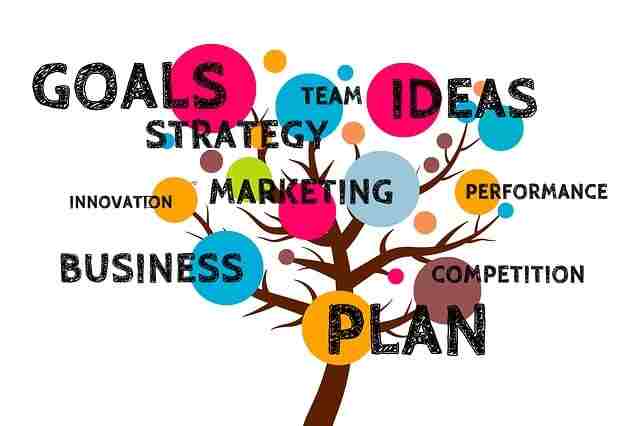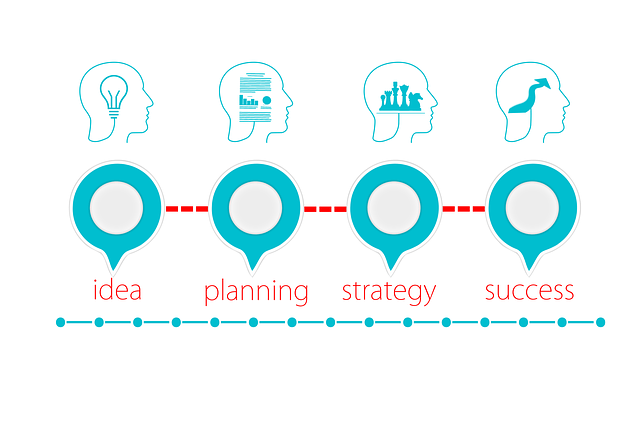Are you struggling to get your content marketing campaigns off the ground? You’re not alone! Crafting and executing a successful content marketing campaign can be challenging, especially in a crowded online space.
But fear not, there are proven strategies that you can implement to give your campaigns the boost they need to succeed.
In this blog post, we’ll be sharing 10 proven content marketing strategies that you can use to take your campaigns to the next level. From creating high-quality content to leveraging social media, we’ve got you covered.
So let’s dive in and discover the secrets to a successful content marketing campaign!
What is content marketing?
Content marketing is an effective marketing strategy that primarily focuses on creating and sharing valuable, relevant, and consistent content that attracts and retains a clearly defined audience. The goal of content marketing is to build trust and credibility with your audience, ultimately leading to increased brand awareness, customer loyalty, and business growth.
Content can take many forms, such as blog posts, social media updates, videos, podcasts, and more. The key to successful content marketing is to create content that resonates with your target audience, addresses their pain points, and provides solutions to their problems.
By doing so, you can establish yourself as a thought leader in your industry and create a loyal following of customers who trust and value your brand.
Content marketing is a powerful strategy that can help businesses of all sizes and industries achieve their marketing goals. Whether you’re looking to build brand awareness, generate leads, or establish yourself as a thought leader, content marketing can help you get there.
Importance of having a successful content marketing campaign

Having a successful content marketing campaign can be incredibly valuable for businesses. Here are a few reasons why:
Increased brand awareness
By creating high-quality content that resonates with your target audience, you can increase your brand’s visibility and awareness. This can lead to more leads, sales, and business growth over time.
Improved search engine rankings
Content marketing can also help improve your search engine rankings, making it easier for potential customers to find you online. By creating content that is optimized for specific keywords and topics, you can improve your website’s visibility on search engines like Google.
Establishing thought leadership
Creating high-quality content can also help establish your brand as a thought leader in your industry. By providing valuable insights and solutions to your target audience’s problems, you can build trust and credibility, and position yourself as an authority in your field.
Building customer loyalty
Successful content marketing campaigns can also help build customer loyalty and advocacy. By creating content that speaks to your audience’s needs and interests, you can foster a sense of community and connection, which can lead to more repeat business and positive word-of-mouth referrals.
Overall, a successful content marketing campaign can help businesses achieve a wide range of marketing goals, from improving brand awareness and search engine rankings, to building thought leadership and customer loyalty.
Content Marketing Strategies for a successful campaign
Strategy 1: Define your target audience
Defining your target audience is a critical component of successful content marketing strategies. By understanding who your target audience is, you can create content that resonates with them, speaks to their needs and interests, and ultimately drives engagement, leads, and sales.
To define your target audience, you should start by conducting research and gathering data on your existing customers or ideal customers. This may involve analyzing demographics such as age, gender, location, and income, as well as psychographics such as interests, values, and behaviors.
Once you have a clear understanding of who your target audience is, you can start creating content that speaks directly to them. This may involve developing buyer personas that represent your target audience and creating content that addresses their pain points, challenges, and goals.
For example, if your target audience is young mothers who are interested in natural parenting, you might create blog posts that provide tips for natural parenting, share stories from other mothers who have successfully used natural parenting techniques or highlight natural parenting products that are safe and effective for babies and young children.
By defining your target audience and creating content that speaks directly to them, you can increase the effectiveness of your content marketing campaigns and improve your overall ROI. So take the time to get to know your audience, and tailor your content accordingly.
Strategy 2 : Develop a content marketing plan

Developing a content marketing plan is another critical component of any successful content marketing strategies. A content marketing plan outlines the goals, target audience, content types, channels, and metrics for your content marketing campaigns, and helps ensure that your content is aligned with your overall marketing objectives.
Here are some steps you can take to develop a content marketing plan:
- Set your goals: Start by defining your content marketing goals. Are you looking to drive more traffic to your website, generate more leads, or establish your brand as a thought leader in your industry? Having clear goals in mind will help you create content that is tailored to your desired outcomes.
- Define your target audience: As we discussed earlier, defining your target audience is critical to creating content that resonates with them. Identify the key characteristics and pain points of your target audience, and use this information to create buyer personas that will guide your content creation.
- Choose your content types and channels: Once you have a clear understanding of your goals and target audience, you can start thinking about the types of content that will best resonate with your audience. This may include blog posts, social media updates, videos, podcasts, infographics, and more. Consider which channels your audience is most active on, and tailor your content to those channels.
- Develop a content calendar: Creating a content calendar can help you stay organized and ensure that you are consistently creating and publishing content. Your content calendar should include the topics, types, and channels for each piece of content, as well as deadlines and publication dates.
- Measure your results: Finally, it’s important to measure the results of your content marketing campaigns. Use analytics tools to track key metrics such as website traffic, social media engagement, and lead generation, and use this data to refine your content marketing strategies over time
By developing a content marketing plan, you can ensure that your content is aligned with your overall marketing goals, and create content that resonates with your target audience and drives engagement, leads, and sales.
Strategy 3: Produce high-quality content
Producing high-quality content is one of the critical components of successful content marketing strategies. High-quality content is content that is valuable, informative, engaging, and relevant to your target audience, and helps establish your brand as a trusted authority in your industry.
Following are some major tips for producing high-quality content:
- Understand your audience: Before you start creating content, it’s important to have a clear understanding of your target audience’s needs and interests. Conduct research, analyze customer data, and create buyer personas to guide your content creation.
- Choose the right format: There are many different types of content, from blog posts and videos to infographics and podcasts. Choose the appropriate format which will best suit your audience and your message.
- Focus on quality over quantity: It’s better to create fewer pieces of high-quality content than to produce a lot of low-quality content. Take the time to research your topic, write well-crafted copy, and include high-quality visuals and multimedia elements.
- Provide value: Your content should provide value to your audience, whether it’s by educating them on a topic, providing solutions to their problems, or entertaining them. Focus on providing actionable insights and information that your audience can use.
- Use a consistent brand voice: Your content should reflect your brand’s personality and values, and use a consistent tone and voice across all channels and formats.
- Optimize for SEO: While producing high-quality content should always be your top priority, it’s also important to optimize your content for search engines. Use relevant keywords and meta tags, include internal and external links, and make sure your content is formatted for easy reading.
By producing high-quality content, you can establish your brand as a trusted authority, drive engagement and shares, and ultimately achieve your content marketing goals.
Strategy 4: Use various types of content

Using various types of content is an effective content marketing strategy because it allows you to reach and engage with different segments of your target audience, who may have different preferences for consuming content. By diversifying your content types, you can keep your audience interested and engaged, and avoid content fatigue.
Here are some types of content you can use as part of your content marketing strategy:
- Blog posts: Blog posts are a staple of content marketing and are effective at providing valuable information, insights, and thought leadership to your audience.
- Videos: Videos are highly engaging and can be used to demonstrate products, showcase customer testimonials, or share how-to information. They can be shared on social media, embedded in blog posts, or used as part of email marketing campaigns.
- Infographics: Infographics are a visually appealing way to convey complex information or data in a clear and concise way. They can be shared on social media, used in blog posts, or incorporated into presentations.
- Podcasts: Podcasts are a popular way to share insights, interviews, or industry news. They can be promoted on social media, embedded in blog posts, or distributed through podcast directories.
- Ebooks and whitepapers: Ebooks and whitepapers are longer-form pieces of content that provide in-depth analysis or research on a particular topic. They can be used to generate leads, promote thought leadership, or provide educational resources to your audience.
- Webinars: Webinars are a way to share information or provide training in a live, interactive format. They can be used to engage with prospects, educate customers, or promote thought leadership.
By using various types of content, you can reach different segments of your audience and engage with them in different ways. It’s important to choose the right content types based on your goals and your audience’s preferences and to create content that is high-quality, informative, and engaging.
Strategy 5: Promote your content
Promoting your content is an essential part of an effective content marketing strategy. Without promotion, your content may not reach your target audience, and your efforts may go to waste. Here are some tips for promoting your content:
- Share on social media: Social media is a great way to share your content with a large audience. It is essential to share your content on various social media channels and encourage your followers to share it with their networks.
- Use email marketing: Email marketing is a powerful way to promote your content to your existing subscribers. Send newsletters or dedicated emails highlighting your latest content, and include social sharing buttons to encourage your subscribers to share.
- Collaborate with influencers: Partnering with influencers in your industry can help expand your reach and drive more traffic to your content. Reach out to influencers who have a large following and align with your brand values, and ask if they would be willing to share your content with their followers.
- Leverage paid advertising: Paid advertising, such as Google Ads or social media ads, can help you reach a larger audience and drive more traffic to your content. Choose the right targeting options based on your audience and goals, and create compelling ad copy and visuals.
- Repurpose your content: Repurposing your content into different formats, such as videos, infographics, or social media posts, can help you reach new audiences and drive more engagement. Repurposing also allows you to get more mileage out of your content and extend its lifespan.
- Utilize content distribution platforms: Content distribution platforms, such as Outbrain or Taboola, can help you get your content in front of a larger audience. These platforms promote your content on other websites, giving you more exposure and driving more traffic to your content.
By promoting your content effectively, you can reach a larger audience, drive more traffic to your website, and ultimately achieve your content marketing goals.
Strategy 6: Analyze and measure results

Analyzing and measuring the results of your content marketing efforts is crucial for understanding what is working and what isn’t, and for making informed decisions about future content marketing strategies. Here are some tips for analyzing and measuring results:
- Set goals and KPIs: Before you start your content marketing campaign, set specific and measurable goals and key performance indicators (KPIs) that align with your overall marketing objectives. For example, your goals could be to increase website traffic, generate leads, or boost engagement on social media.
- Use analytics tools: Use analytics tools, such as Google Analytics, to track and measure the performance of your content. These tools can provide valuable insights into how your content is performing, including page views, time on page, bounce rate, and conversion rates.
- Monitor social media engagement: Monitor engagement on your social media channels, such as likes, comments, and shares, to see how your content is resonating with your audience. You should use your social media analytics tools to track your progress over time.
- Conduct surveys and feedback: Conduct surveys and gather feedback from your audience to understand their preferences and interests. This can help you create more relevant and engaging content in the future.
- A/B testing: Use A/B testing to test different variations of your content and see which performs better. For example, you could test different headlines, images, or calls to action to see which drives more clicks and conversions.
- Regularly review and adjust your strategy: Regularly review your content marketing strategy and adjust it based on your findings. Use the insights and data you gather to optimize your content for better performance and to improve your overall content marketing strategy.
By analyzing and measuring the results of your content marketing efforts, you can identify what is working and what needs improvement, and make informed decisions about future content marketing strategies. This will ultimately help you achieve your marketing goals and drive more success for your business.
Strategy 7 : Repurpose your content
Repurposing your content is an effective content marketing strategy that involves taking existing content and presenting it in a new format or medium. This approach allows you to reach new audiences, extend the lifespan of your content, and maximize the return on your content creation efforts. Here are some ways to repurpose your content:
- Turn blog posts into videos: Turn your blog posts into videos by creating animated videos, or filming a video of yourself presenting the information from the blog post. This allows you to reach audiences who prefer to consume content through video.
- Create infographics: Turn data-rich blog posts into infographics. Infographics are a great way to communicate complex information in a visually appealing and shareable format.
- Compile e-books: Combine multiple blog posts or articles into an e-book. E-books are a great way to provide in-depth information on a topic and can be used as a lead magnet to generate leads for your business.
- Create social media posts: Extract key points or quotes from your blog posts or articles and turn them into social media posts. This can help you reach new audiences on social media and drive more engagement.
- Turn podcasts into blog posts: If you have a podcast, consider transcribing the audio and turning it into a blog post. This allows you to reach audiences who prefer to read rather than listen to content.
By repurposing your content, you can reach new audiences and engage your existing audience in new ways. This approach also allows you to maximize the return on your content creation efforts and get more mileage from your existing content.
Strategy 8: Engage with your audience

Engaging with your audience is a critical content marketing strategy that involves creating a two-way conversation with your audience. It is about building relationships, establishing trust, and creating a loyal following. Following are some major ways to engage with your audience:
- Respond to comments and messages: Respond wisely, promptly, and thoughtfully to each comment and message from your audience. This shows that you care about their opinions and are interested in their feedback.
- Host webinars and Q&A sessions: Host webinars and Q&A sessions to provide value to your audience and answer their questions. This is a great way to establish yourself as an authority in your industry and build trust with your audience.
- Encourage user-generated content: Encourage your potential audience for the creation and sharing of their own content related to a specific brand or product. It will help your business to build a community around your brand and increase engagement.
- Personalize your content: Use personalization techniques to make your content more relevant to your audience. This can include using their name in email marketing campaigns or tailoring the content to their interests and preferences.
- Use social media to interact with your audience: Use social media platforms to interact with your audience, such as asking for their opinions on a topic or sharing user-generated content. This can help you build a strong and engaged following on social media.
By engaging with your audience, you can create a strong connection with them, build trust and loyalty, and establish yourself as an authority in your industry. This can ultimately help you achieve your marketing goals and drive more success for your business.
Strategy 9: Collaborate with influencers
Collaborating with influencers is an effective content marketing strategy because it allows you to tap into the influencer’s audience and leverage their credibility and trust with their followers. Influencers have built a following based on their expertise, authenticity, and ability to engage with their audience, making them powerful advocates for your brand.
Here are some reasons why collaborating with influencers can be an effective content marketing strategy:
- Reach a new audience: Influencers have a loyal and engaged following that trusts their recommendations. By collaborating with an influencer, you can reach a new audience that may not be aware of your brand or products.
- Build trust and credibility: Influencers have built their following based on their expertise, authenticity, and ability to engage with their audience. By collaborating with an influencer, you can leverage their credibility and trust with their followers to build trust and credibility for your brand.
- Increase engagement: Influencers are skilled at creating engaging content that resonates with their audience. By collaborating with an influencer, you can tap into their creativity and expertise to create content that drives engagement and generates buzz for your brand.
- Boost sales and conversions: Influencers can drive sales and conversions by promoting your products to their audience. The followers of these influencers trust their recommendations and are more likely to make a purchase based on their endorsement.
- Build long-term relationships: Collaborating with influencers can help you build long-term relationships with them. By working together on multiple campaigns, you can establish a strong partnership and leverage their influence to drive ongoing success for your brand.
Overall, collaborating with influencers can be an effective content marketing strategy for brands looking to reach new audiences, build trust and credibility, increase engagement, boost sales and conversions, and build long-term relationships with influencers.
Conclusion
Content marketing is a powerful way to connect with your audience, build trust, and drive success for your business. By using the 9 proven content marketing strategies we’ve discussed in this blog post, you can create a successful content marketing campaign that resonates with your audience and achieves your marketing goals.
Keep in mind that content marketing is an ongoing process that requires constant refinement and optimization. By regularly assessing your performance, adapting to changes in your industry, and experimenting with new tactics, you can continue to improve your content marketing and drive even greater success for your business.
You may also like to read
Digital marketing- The best short-term job-oriented course you should pursue
Getting Ahead of the Game: Why Students Should Embrace Search Engine Marketing

